Bethel Green Seniors Residence, 645 Millwood Road, Toronto is a church conversion featuring mixed form and function
In their article about church reconversions in Toronto, Jason Hackwork and Erin Gullikson (2013) describe the Bethel Green Seniors Residence as a church conversion involving mixed function and form.
In such a form of church redevelopment, a building is constructed around all of part of a congregation’s initial place of worship, and a new church, or some other service extension of the church, is built or renovated on the site.
Although the church was built in 1920, Table 3 in Hackworth and Gullikson (2013) indicates the building was neither heritage listed or designated. The website for the residence notes that the roof of the church was aging.
A February 13, 2012 report from the Older Women’s Network regarding a presentation by Deirdre Gibson, of Gibson and Associates, provides background regarding the development of Bethel Green Seniors Residences.
A Toronto 2010 Doors Open profile provides information about the history of the Bethel Green Seniors Residence project.
Below is an excerpt from the above-noted document:
This four-storey building includes a re-developed and smaller Bethel Baptist Church on grade, plus common room and nineteen “Life-Lease Apartments” for seniors, plus parking underground for 26 cars. Sponsored by Bethel Baptist Church, which has existed on this site since 1920, this 4 year-old energy-efficient building is an excellent example of a new intensified use of an inner city site. It was specifically designed for “independent” seniors over 65 to age-in-place surrounded by a caring community of other seniors and neighbourhood families.
Most importantly it allows a well established community institution (the Church) to continue with greatly reduced overhead while local seniors can remain residing in the neighbourhood where they raised their families and living without the worry and financial stress of owning a larger residential house.
[End of excerpt]
Official Plan Amendment and Rezoning
The redevelopment of the church is highlighted in a City of Toronto document entitled Draft By-laws – Official Plan Amendment and Rezoning – 36 Whitewood Road (St. Paul’s, Ward 22).
Below are excerpts from the above-noted document:
Background :
Proposal
An application was submitted by Robert Reimers Architect on August 14, 2003 to amend the Official Plan and Zoning By-law and for Site Plan Approval for 36 Whitewood Road.
The application is to demolish the existing church building on the site and replace it with a 4-storey mixed-use church and seniors non-profit residential apartment building.
The proposed building has 19 apartment units, 26 underground parking spaces and approximately 170 square metres of worship area on the first floor. Vehicular access is proposed from Whitewood Road. Please refer to Attachments 3 and 4 for Site Plan and Elevation details and Attachment 1 for site statistics.
Site and Surrounding Area
The site is located within a low density residential neighbourhood at the south-west corner of Millwood Road and Whitewood Road. The existing 3-storey church building sits in an L-shape configuration on the site with walls extending the length of the west and south property lines adjacent to 643 Millwood Road and 34 Whitewood Road, respectively.
The immediate area is comprised predominantly of 1 and 2 storey single and semi-detached houses.
One block to the east is the local retail and service shops and the higher density residential buildings of Bayview Avenue. Commercial uses within one block of the site include a grocery store, a dry cleaners, a bank and a video store. Houses on the east side of Whitewood Road (facing the site) flank or back onto those commercial uses.
Official Plan
The site is designated Low Density Residential Area in the Yonge-Eglinton Part II Plan of the former City of Toronto (refer to Attachment 6). This designation permits residential buildings up to a maximum density of 1.0 times the lot area.

Toronto City Council 4 Toronto South Community Council June 22, 23 and 24, 2004 Report 5, Clause 6
At its meeting of November 26 – 28, 2002, City Council adopted the new Official Plan for the City of Toronto. The Minister of Municipal Affairs and Housing approved the new plan in part, with modifications. The Minister’s decision has been appealed in its entirety.
The new Official Plan is now before the Ontario Municipal Board. The first pre-hearing on the new Official Plan was held on April 19 and 20, 2004. The next pre-hearing has been scheduled for September 14, 2004.
Zoning
The site is zoned R2 Z0.6 with a height limit of 9.0 metres (refer to Attachment 5). That designation permits residential buildings within a density of 0.6 times the area of the lot.
Site Plan Control
The proposed development is subject to Site Plan Control. An application for Site Plan approval has been submitted concurrently with the Official Plan and Zoning By-law amendment application.
Tree Preservation
The owner shall be required to protect 5 City-owned trees and to apply for City approval to remove 2 trees on City property.
Reasons for the Application
The applicant is proposing a total density of 2.0 times the lot area instead of the 1.0 or 0.6 times coverage permitted in the Official Plan and Zoning By-law respectively. The proposed height of 14.4 metres (to the top of the parapets) exceeds the 9.0 metre height limit for the property. Other areas of non-compliance with the Zoning By-law are identified in the Zoning Review, which is found in Attachment 7.
Community Consultation
At the direction of Toronto South Community Council, a community consultation meeting was held at Bethel Baptist Church on March 10, 2004. Concerns expressed at the meeting and in written comments subsequent to the meeting included:
– building height, particularly with respect to the shadowing and overlook of adjacent houses and their yards but also with respect to the massing of a 4-storey apartment building in a neighbourhood of predominantly 1 and 2-storey single family homes;
– the number of units was felt to be excessive for the neighbourhood;
– street parking is considered in short supply due to patrons of local (Bayview Avenue) businesses;
- the height of the mechanical penthouse which was considered too imposing on the street as a result of its size;
– the location and the potential for noise generation of the HVAC equipment; and
– the property line fencing should be shown as a combination of wood and living fence materials.
Agency Circulation
The application was circulated to all appropriate agencies and City Departments. Responses received have been used to assist in evaluating the application and to formulate appropriate by- law standards.
Comments :
(i) Land Use
The subject site is located within a low density residential neighbourhood which is comprised primarily of 1 and 2-storey single detached and semi-detached family homes with some townhouses and walk-up apartments throughout.
The 3.5-storey church building has been a physical presence at its current address and a part of the neighbourhood for over 74 years. The church has had a shrinking congregation to the point where it can no longer afford to occupy the building. Further, the church has indicated that its choices with respect to its future at 36 Whitewood Road are limited to two alternatives, which are:
– downsize on-site by demolishing the existing church building and incorporating a greatly reduced worship area into a mixed-non-profit seniors residential apartment and church building, or
– vacate the site and sell the property.
The church has been a long-time member of the neighbourhood and, in addition to Sunday services, it offers a range of community services that include, Brownies and Guides, after school programs, homework help, music programs, moms and tots coffee time as well as making space available for community needs.
The first alternative is the Churches desired choice. It achieves two benefits for the neighbourhood.
First, it would maintain the church presence in the neighbourhood.
Second, it provides affordable housing for seniors within a neighbourhood that is ideally suited for them. The site is walking distance to grocery stores, pharmacies and other retail stores, restaurants and banks and other services.

(ii) Height
The proposed mixed use, seniors apartment and church building is 4-storeys in height. The building measures approximately 13.6 metres to the top of the fourth floor roof-line, 14.4 metres to the top of the parapets and 15.24 metres to the top of the bell tower architectural feature (no bells are included). While the parapets (1 on Millwood Road and 2 on Whitewood Road) and the bell tower are included in the building height and require a zoning exemption, they do not form continuous roof lines at those heights.
The mechanical penthouse is exempted from the maximum height restriction. As originally proposed it extended the building’s height to 17.4 metres. The mechanical penthouse has been redesigned to, be lower (16.6 metres) and smaller in area (79.2 square metres) and therefore less visibly obtrusive from the street.
The existing house to the south at 34 Whitewood Road is approximately 11 metres to the top of its roof line or approximately 2.6 metres lower than the proposed building. The existing building to the west at 643 Millwood Road is lower at approximately 8 metres to the top of its roof line. In response to neighbourhood concerns respecting height, two of the six fourth floor units have been deleted. As a result, the building is more sensitive to the height differences between the proposed building and these abutting and other existing houses in the neighbourhood.
The deletion of the western most fourth floor unit facing Millwood Road, effectively shows a progressive stepping up from the existing 2-storey houses on Millwood to the 3 storeys (approximately 9.2 metres or 0.2 metres over the permitted height limit) of the first apartment bay of the proposed building on the north elevation, to the 4-storeys of the same elevation at Millwood and Whitewood Roads.
The deletion of the southern-most fourth floor unit on Whitewood Road shows a stepping down in height from 4-storeys at the corner of Millwood and Whitewood Roads to 3-storeys (approximately 10.0 metres or 1.0 metre over the permitted height limit). The 3-storey, 10 metre height of the proposed building at this point (at the southern property line) would be lower than the 11.0 metre height of the roof-line of the adjacent house at 34 Whitewood Road.
The stepping down at the west and south ends of the proposed building concentrates the height of the building at the corner of Millwood and Whitewood roads and not on the abutting houses next to the shared property lines of the project. Height concentration at the corner also has the effect of centering attention on the bell tower and formal entrance area that straddles the corner and accentuates the church presence in the neighbourhood.
(iii) Massing
The existing 3-storey church building is built in an ‘L’ shape, tight to the west and south property lines. This built form and orientation presents a 3-storey brick wall to the rear yards of the adjacent houses on Millwood and Whitewood roads. The existing church also extends beyond the front walls of the adjacent homes on both streets. Open space on the site is currently focussed on the corner of Millwood and Whitewood roads with no rear yard open space.

Toronto City Council 7 Toronto South Community Council June 22, 23 and 24, 2004 Report 5, Clause 6
The massing of the proposed building has the opposite configuration not unlike an upside down and backwards ‘L’ shape (see Attachment 2). Its’ massing is pulled to the street edges and away from the neighbouring homes leaving a landscaped garden area adjacent to their rear yard lot lines instead of the existing brick wall. The building mass as well as its height are focussed at the corner.
In addition to the stepping down of building height (discussed in the previous section of this report), the proposed mansard roof (with dormers) on the 4-storey portion of the proposed building will tend to fade that floor into the visual background by virtue of its sloping design away from the street and its construction of darker, non-brick materials.
(iv) Shadow and Overlook
Staff have reviewed the applicant’s shadow impact study and find that the proposed development maintains reasonable access to sunlight for the existing houses in the area.
An objective of the new Official Plan is to encourage the reinforcement of the existing physical patterns of established neighbourhoods. The new Official Plan also states that maintaining existing setbacks from streets and maintaining the prevailing patterns of rear and side yard setbacks and landscaped open space as a means of achieving that objective. The proposed development concentrates the building area on the street edges (as does the existing lotting pattern in the neighbourhood) rather than on the west and south lot lines of the abutting houses as does the existing church (refer to Attachments 2, 3 and 4).
The reorientation of the proposed building to the street edges improves the shadow impact on the rear yards of the houses immediately to the west on Millwood Road. This orientation also has the additional benefit of increasing rear yard privacy for adjacent homes on Millwood Road and Whitewood Road by increasing the distance between the windows of the proposed new units and existing homes.
The shadows cast on the north side of Millwood Road and on the east side of Whitewood Road move quickly across the houses in those locations. The proposed building would not have a significantly greater shadow impact on these existing homes than would as-of-right, 3-storey, housing forms such as townhouses or semi-detached houses should they be built on this site.
(v) Density and Unit Count
The applicant has reduced the number of units by 2 which brings the total unit count down from 21 as originally proposed to 19 and reduces the overall density to 2.0 from 2.1 times the lot area. The actual residential density (excluding the church component of the building) is approximately 1.76 times the lot area and is not significantly over the 1.0 times coverage permitted in the Official Plan for this site.

The City’s new Official Plan states that an objective of the City’s continuous development is to reinforce Toronto’s low density residential neighbourhoods but acknowledges that these neighbourhoods may be interspersed with walk-up apartments. The new plan also acknowledges that ‘local institutions’ play an important role in ‘the rhythm of daily life in the neighbourhoods’ and that such institutions include places of worship and seniors housing.
The activity generated by 19 seniors apartment units (or the intensity of the use) can reasonably be expected to be far less than the activity generated by the same number or fewer non-seniors residential units.
(vi) Parking, Access and Traffic Impact
The applicant is proposing 26 parking spaces in a 2-level underground garage. There will be no surface spaces. Twenty six exceeds the 19 spaces (1 per unit) that are required of this development by By-law 438-86.
The By-law does not adjust the parking requirements for the proposed tenant group of residential buildings. For example, no distinction is made in the By-law between seniors or non-seniors apartment unit parking requirements. However, the City’s Works Department estimated parking demands are based on study data of actual similar uses. In this case the Works Department estimated parking demand for a building containing 21 seniors apartment units and 167 m2 of worship area is 7 spaces. Three for the seniors apartments and 4 for the church component. As an example of the lower parking demand by tenants of senior’s housing, the main floor parking garage of the comparable seniors apartment building a few blocks away at 1387 Bayview Avenue rarely contains more than two cars.
The By-law has no parking requirement for the church component of the project. If parking were to required on the basis of Sunday church service demand, it could generate large asphalt surface parking areas in our neighbourhoods or multiple levels of expensive underground parking that would be largely vacant for much of the remainder of the week. The existing church currently has 4 surface parking spaces and the applicant is proposing to replace these with 4 underground spaces for the greatly reduced church area. This would be satisfactory.
Vehicular access to the garage is proposed from Whitewood Road and is considered acceptable by City Works.
The anticipated traffic impact will not be significant. Residents of seniors apartment buildings typically have low rates of automobile ownership and trip generation is often at non-peak hours.
(vii) Landscaped Open Space
The applicant is proposing that 40% of the area of the lot is to be landscaped open space. This exceeds the 30%, which is required by By-law 438-86. The landscaping includes a sitting area at the main entrance on Millwood Road and a new garden area (proposed to be a community garden for the residents of the building) at the rear of the development.

Toronto City Council 9 Toronto South Community Council June 22, 23 and 24, 2004 Report 5, Clause 6
A ‘living fence’ which is a combination of fencing and vegetative materials along the west and south property lines is proposed.
The applicant’s landscape plan and arborist’s report show 2 City-owned trees that are proposed to be removed and replaced. City approval will be required. Some flowering crabapple trees on private property are proposed to be removed due to the walking hazard that the crabapple fruit poses to seniors.
The proposed removal and replacement of trees is acceptable to the City Forester.
(viii) Tenure
The proposed 19 non-profit apartments will be owned by the non-profit housing corporation which will offer a ‘life lease’ contract wherein seniors purchase the right to occupy specific units while overall ownership and land title remains undivided and held by the non-profit corporation of which the seniors and the church are members.
Conclusions :
The applicant is proposing a building that exceeds the current planning permissions respecting height and density. This is acceptable for reasons that include the following:
– the proposal would provide single floor apartment accommodation for seniors which is close to shopping and services, the TTC and other amenities;
– building height and massing are appropriately situated on the site to minimize impact on existing homes;
– sufficient underground parking is to be provided;
– traffic impact resulting from the seniors apartments is anticipated to be low;
– the proposed redevelopment is providing more than the required amount of landscaped open space; and
– the proposal maintains and continues the 74-year church presence as a service provider in the neighbourhood.
Comment:
An initial proposal for the redevelopment of Wesley Mimico United Church envisioned the demolition of the church with the exception of the bell tower. The architect associated with the initial proposal, Robert Reimers, was the designer of the Bethel Green Seniors Residence.
I have visited the Bethel Green site to take photographs and gather impressions.
It would not be good use of my time to spent time to visit in order to attune to the neighbourhood, to get a sense of what it is about. There are other parts of Toronto, more closely related to my line of work, that I want to focus upon.
However, for whatever value they may have, I’m pleased to share some general impressions.
First, the absence of a heritage listing or designation for the original church intrigues me.
Secondly, what struck me on my one or two visits to the site was the presence of the traffic along Bayview Avenue. With that level of noise and activity, preservation of heritage buildings may not matter. There may be other reasons.
Thirdly, I’m aware of how little I know.
In a neighbourhood such as Mimico where Wesley Mimico United Church is located, or in Long Branch, I’m part of a network of contacts that gives me a sense of what’s happening in local neighbourhoods that I otherwise would not have. My current contacts with regard to the neighbourhood at Bayview and Millwood are minimal. Thus I’m aware of how little I know about that neighbourhood, or about the story behind Bethel Green Seniors Residence.

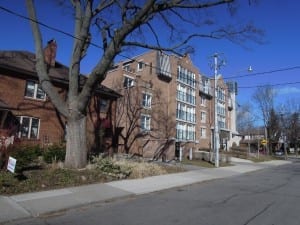
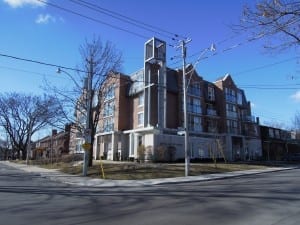
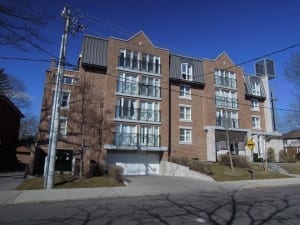
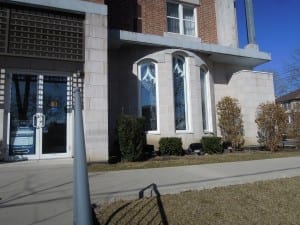
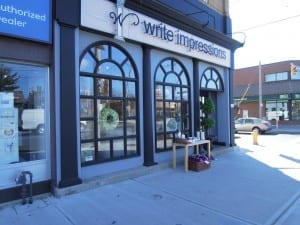
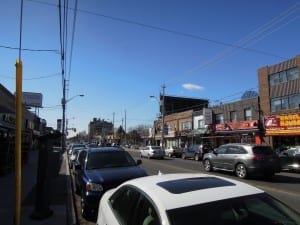
Leave a Reply
Want to join the discussion?Feel free to contribute!